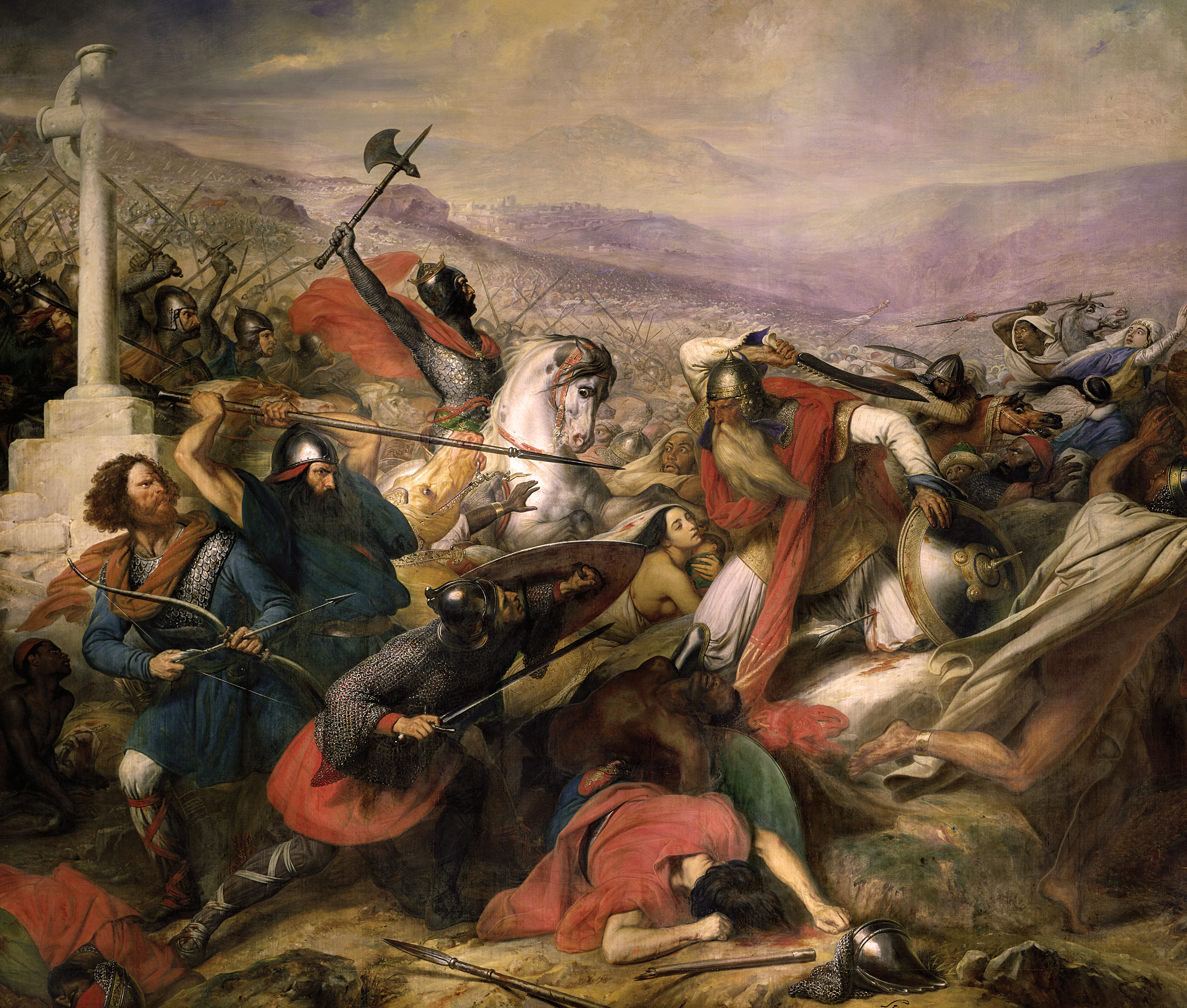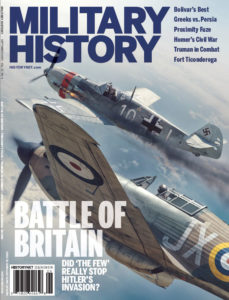The Franks gasped and strained as they rolled the massive log battering ram up against the main gate at Avignon. From the battlements above Muslim garrison troops rained heavy stones and torches down on the attackers, yet the siege engine’s thick, peaked roof of leather-shrouded wooden planks deflected the stones and would not burn. Frankish archers shot volleys at the defenders, providing some cover for the ramming crew. Once the ram was in place, men with wedges and hammers locked its wheels. The crew then repeatedly drew back the iron-tipped log and swung it forward, building momentum. On impact, the ram dented and splintered the massive gate. The blows that followed did even more damage.
As distracted Moorish troops continued to shower the ram with projectiles, a group of especially agile Franks clambered atop structures adjacent to the curtain wall and flung grappling hooks fixed to ropes over the parapet. Once the hooks were firmly set, warriors clambered up the knotted ropes and over the wall to infiltrate the city. Armed with swords and shields, they ran through the streets to the gate and attacked its startled defenders from the rear.
After dispatching the Moorish sentries, the Franks swung open the gate, and the bulk of the attacking army poured in. During the subsequent battle the Franks slaughtered anyone who resisted and captured the rest. Once the siege was complete, the victors burned the garrison and razed Avignon’s defensive walls.
The Franks’ 737 siege of Avignon was still decades in the future when in 711 an Umayyad Muslim army crossed the Strait of Gibraltar from North Africa to the Visigothic Kingdom (spread across present-day southwestern France and the Iberian Peninsula). Within a few years the Umayyads conquered much of Iberia, renaming it al-Andalus. In 720 al-Samh, the emir (governor general) crossed the Pyrenees into Gaul to conquer the Visigoth remnant, centered on the city of Narbonne. The Moors—as Muslim inhabitants of the Iberian Peninsula were called—brutally sacked the city, killing all men and selling women and children into slavery. Using Narbonne as a base, the Moors then raided north into Aquitaine and Burgundy. In the spring of 721 al-Samh laid siege to the Aquitanian capital of Toulouse.
Three months into the siege Eudes the Great, duke of Aquitaine, attacked the besiegers, decimating the Muslims, killing al-Samh and lifting the siege. The survivors retreated southeast to Narbonne in disarray. At least temporarily Eudes had checked Moorish expansion in Western Europe.
Just four years later, in 725, the new emir, Anbasa, took fortified Carcassonne by storm and forced Nîmes to capitulate. That same year the emir launched a devastating raid, or razzia, from Nîmes up the Rhône Valley. Riding into Burgundy, the Moors looted the countryside around Avignon and Lyon and sacked and burned the city of Autun. In 726 Anbasa died, and for the next six years the Moors were too preoccupied with internal dissent to attack the Franks.
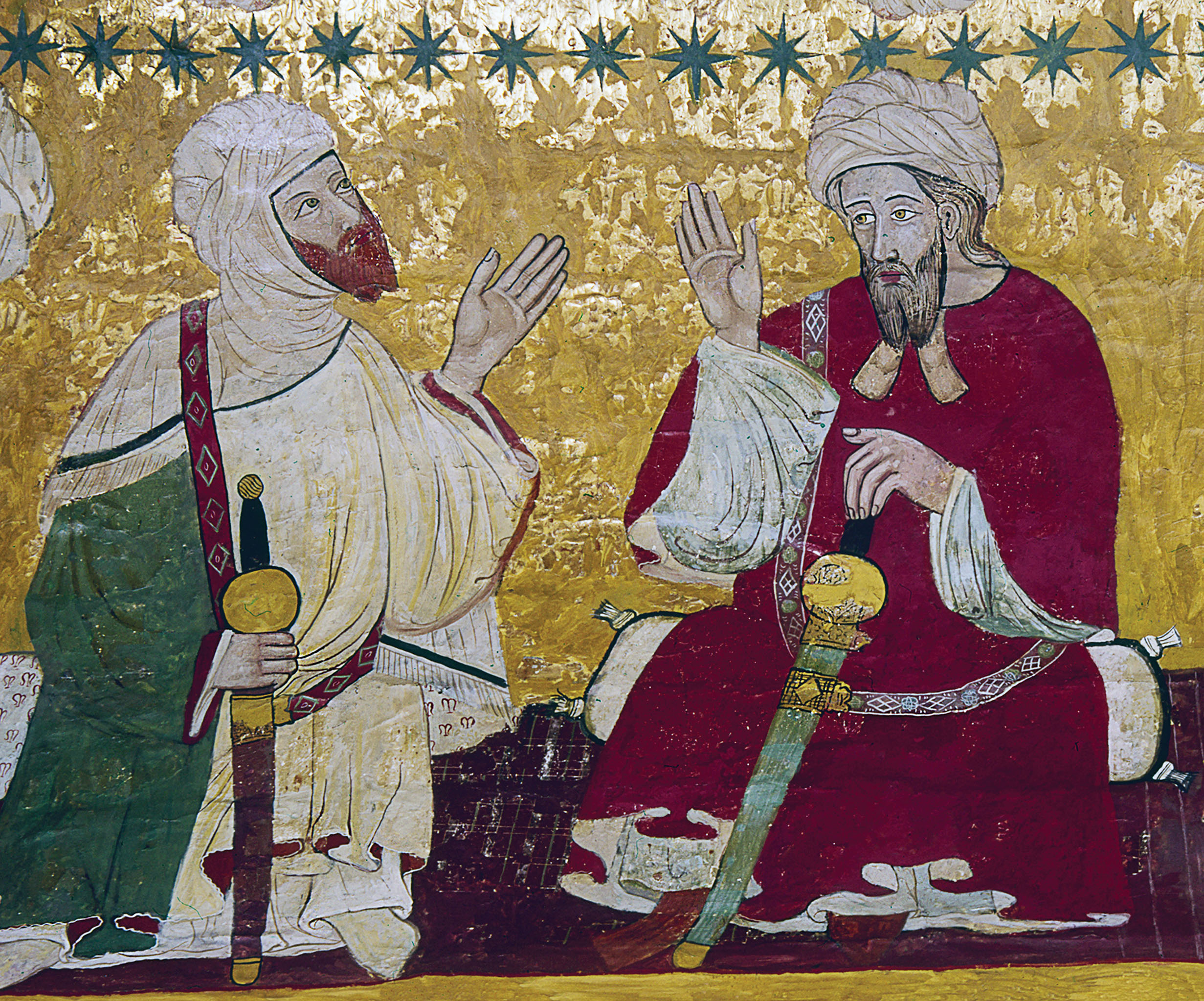
In 731 the Muslim district governor of Cerdagne, a Berber named Munusa, rebelled against Emir Abd al-Rahman and signed a nonaggression pact with Eudes of Aquitaine, the man who had defeated the Moors at Toulouse a decade earlier. In response Abd al-Rahman raised an army and besieged Munusa in his fortress-city. The defeated rebel leader was either killed or committed suicide, and Abd al-Rahman reportedly had his severed head shipped to the caliph in Damascus.
A year later Abd al-Rahman decided to eliminate what he viewed as a major strategic threat to his realm in al-Andalus—Aquitaine and its troublesome duke, Eudes. Gathering upward of 20,000 men at Pamplona, the emir led his army across the Pyrenees at Roncesvalles Pass and first stormed Bordeaux, on the River Garonne, sacking the city, looting and burning its churches and slaying its inhabitants. The Moors then slaughtered Eudes’ army at the Battle of the Garonne. Barely escaping with his life, the duke led survivors north to join Charles, duke and prince of the Franks, the primary Christian leader in the West. The Moors pursued the defeated Aquitanians, looting and destroying churches and forts along the way.
On learning of the approaching Muslims, Charles gathered an army of some 15,000 Franks and moved south to link up with Eudes and his surviving troops. Between Tours and Poitiers (near present-day Moussais-la-Bataille) Charles drew his army into formation atop a hill between woodlands. There he waited. The Moorish cavalry, unable to flank the heavy infantry line, were forced into a series of headlong charges. According to a contemporary chronicle, the Franks stood “immobile like a wall, holding together like a glacier in the cold regions, and in the blink of an eye annihilated the Arabs with the sword.” Abd al-Rahman was killed. The surviving Muslims waited till nightfall and then fled south. Charles’ decisive victory earned him the sobriquet le Martel (“the Hammer”).
The battle also served to draw Charles’ belated attention to the imminent threat the Moors posed to his realm, thus shifting his strategic focus southward. In 733 he occupied Lyon, in southern Burgundy, then pressed his way down the Rhône. By 737 Charles and his Franks controlled all of Burgundy and Provence, from Orléans south to the Mediterranean.
Frankish control of the Rhône Valley presented the Moors of Narbonne with a serious strategic quandary, blocking them from raiding either north into Burgundy or east to the Alps. They found help from an unexpected source—Maurontus, a Provençal duke displaced by Charles’ sweep through the region. Willing to ally with the Moors for personal gain, the disgruntled duke and followers opened the gates of Avignon to the invaders. After placing a small garrison in the city, the Moors targeted local supporters of Charles, killing some and driving others away.
In south-central Gaul, Avignon was the gateway to the lower Rhône, the Mediterranean coast and the passes to Italy, thus the Muslim presence posed a threat to the Frankish position in the south. Charles’ reaction was swift. First he dispatched half-brother Duke Childebrand with an advance force of about 2,000 men and a siege train large enough to surround the city. Charles followed with 8,000 additional troops. On arrival he got word the Moors were massing a relief force near Narbonne. He thus took Avignon by lightning assault rather than siege.
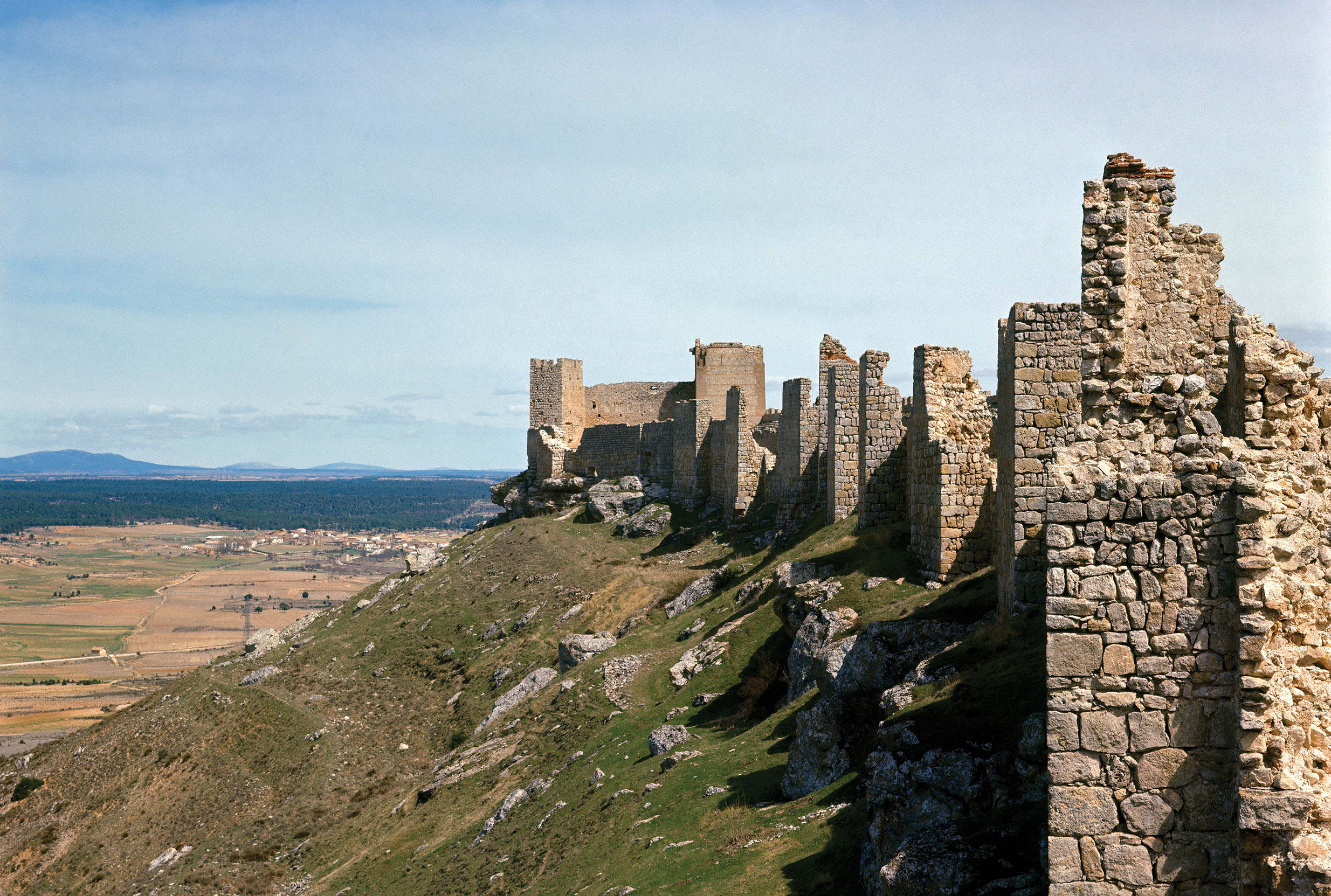
As the garrison lay smoldering, Charles went on the strategic offensive. Leaving his siege train and a garrison of locals in Avignon, he crossed the Rhône with 10,000 men, bypassed Muslim-occupied Nîmes and fast marched west along the Mediterranean coast to Narbonne. He found the Moorish relief army in a fortified camp just outside the city walls. The Franks surrounded Narbonne and the camp with earthworks and built fortifications along the banks of the Aude to thwart waterborne assault. Charles then had his engineers build battering rams and catapults for an assault on either Narbonne or the camp.
The Moors sent a message to Emir Uqba ibn al-Hajjaj of al-Andalus, who organized a relief force of about 5,000 men in Barcelona under Omar ibn-Chaled. Rather than risk the Pyrenees passes, ibn-Chaled’s army traveled by sea, landing on a peninsula (present-day Port-Mahon) south of Narbonne and using an old Roman dock to unload their horses. Believing he had landed undetected, ibn-Chaled had his men establish a fortified camp on the peninsula’s high ground and rested for the night. The next day the emir planned to move his army up the Berre Valley to the Via Domitia, the Roman coastal road, and then march north to attack the Franks besieging Narbonne.
But Charles got wind of the threat, likely from local Christians. Resolving to split his forces, he left Childebrand and some 5,000 men at Narbonne and led the other half of his army south along the Via Domitia. The men under Charles included his most trusted counts and their leudes (elite mounted retinues), as well as Austrasian Franks, his most elite and battle-hardened infantry. Most were veterans of Charles’ annual campaigns, some of the older men having faced the Moors at the 732 Battle of Tours.
Marching hard down the Via Domitia, the Franks covered the 10 miles to the River Berre in a half day, encamping for the night near an old Visigoth palace. Rising early the next morning as the sun burned off the morning mist, they filtered out of camp and assumed their traditional battle formation—an even line, infantry to the front, with archers and horsemen behind. Charles had them face east, toward the sea, the line anchored on the left by the river and the right by the Étang de la Palme marsh. The infantrymen stood close together, their 3-foot-wide, half-inch-thick round shields overlapping and their deadly 8-foot iron-tipped spears angled forward.
The average Frankish infantryman was a part-time soldier, called out for spring and summer campaigning before returning to his farm for the harvest. He wore an iron helmet but generally could not afford a chain mail shirt or a sword and scabbard. Few men, outside of the nobles’ leudes, could afford such arms and armor.
Some 15 to 20 percent of the Frankish force comprised archers, armed with simple European self bows with a range of about 180 yards. The archers stood to the rear of the infantry, while the leudes—who acted as flank guards and messengers for Charles and the others—formed up just behind the bowmen. The mounted men were equipped with spears, swords and bows as well as shields, helmets and chain mail armor. Trained to quickly dismount and fight on foot in a pinch, they could serve as a reserve to close gaps in the infantry line or reinforce the archers.
Keeping in tight formation, Charles’ army advanced slowly down the valley, halting atop a rise at what today is the village of Sigean. Though surprised by the sudden appearance of their enemy, the Moors had likely already assumed their traditional five-part battle formation—a vanguard, with two equal-sized units slightly to the rear, and light and heavy cavalry, infantry and archers to the left and right of the van. In the center, protected by cavalry, were ibn-Chaled and his messengers. Directly to their rear, a small infantry and archer reserve stood ready to plug any breech.
With cries of “Allahu Akbar!” (“God is the greatest”) echoing across the field, the warriors of Islam started forward. At about 200 yards, the maximum range of their recurve bows, the Moorish archers unleashed an arrow storm at the Franks. Intended to break the enemy’s morale and weaken their line, the volleys made little penetration against the Franks’ heavy shields. At that point the Moorish light cavalry—Berbers on mountain ponies—galloped to within yards of the Frankish line, hurled javelins and rode quickly away, hoping to lure the Christians out of formation. Charles’ men proved disciplined, however, as Frankish archers loosed volley after volley at the retreating Berbers.
Next to enter the fray was the Moors’ heavy cavalry, mounted on large Arabians. Sheltering behind yard-wide shields, its well-trained horsemen wielded yard-long swords and 9-foot lances. Their saddles were fitted with stout iron stirrups that enabled a rider to stand and stab downward with devastating force. On this occasion, though, that ability proved useless, as the Arabians largely shied away from the rows of Frankish infantry spears. Those Moors able to strike a blow found their lances breaking against the Franks’ overlapping shields. Nor did their heavy swords make much of an impact on the shield wall. Meanwhile, the Franks stabbed back with spear and sword, aiming their blows at the unarmored flanks and legs of the horses and unprotected legs of the cavalrymen.
As the Moorish cavalry bounced off the compact Frankish infantry formation, Muslim foot soldiers moved forward. Each bore a 12-foot spear known as a rumh, which they held with both hands. Unable to hold a shield as they advanced, the lightly armored Muslims proved easy targets for Frankish archers. When the Moors dropped their spears to bring shields and swords into play, they opened themselves to attack by Frankish spearmen.
As the Moors fell back, the Franks moved forward, their line like a living threshing machine intent on reaping men. Halting to absorb another Moorish charge, it again moved relentlessly forward, the cries of wounded men and screams of injured horses filling the air.
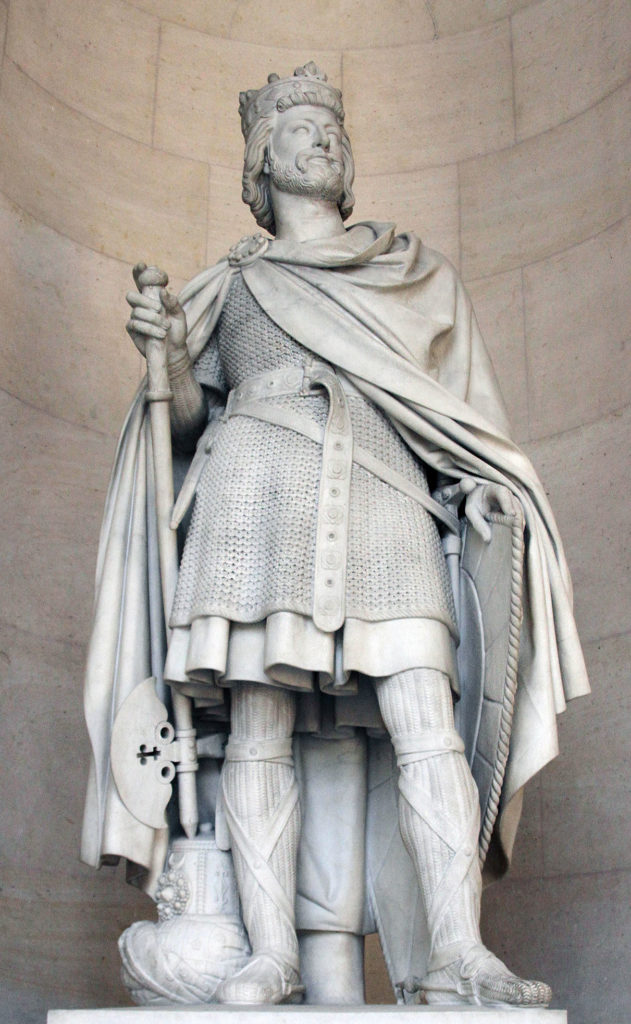
Unable to stop the European juggernaut and jammed into shrinking ground between the Berre, the swamp, the sea and the enemy, ibn-Chaled organized one last desperate charge. The attempt failed, and he was killed. The survivors broke and fled. Unable to reach their fortified camp, many of the Muslims tried swimming out to their fleet off Port-Mahon. “The Franks were quickly after [the Moors] in boats with whatever weapons came to hand and … drowned them,” a contemporary Frankish scribe recorded. Watching the disaster unfold ashore and in the water around them, the commanders of the Moorish fleet lifted anchor and sailed away. Shifting their attention to the lightly defended enemy camp, the Franks soon captured it and a trove of plunder.
Despite his resounding triumph on the Berre, Charles lifted his siege of Narbonne. It is possible he’d lost too many men in the pitched battle to guarantee success at the city, or perhaps he was concerned another enemy army might march north from al-Andalus. The looming end of the campaign season doubtless had his troops clamoring to return to their farms. In any case, “the Hammer” marched away, leaving Narbonne to the Moors.
On the march home, however, the Franks in turn captured the fortified cities of Agde, Béziers and Nîmes. They destroyed the walls and burned the garrisons of all three, rendering them useless as forward military outposts.
With the near total destruction of the Moorish army on the Berre and the demolition of their forward outposts, the Muslims of Narbonne never again threatened the Frankish position in the Rhône Valley or Aquitaine. Two decades later Martel’s son, Pépin the Short, king of the Franks, returned to Narbonne with a Christian army, taking the city in 759 after a long siege. He then drove the Moors back into Iberia, establishing the present border between Spain and France and freeing Europe north of the Pyrenees from Muslim rule. MH
U.S. Army veteran Patrick S. Baker has a master’s degree in European history and contributes to magazines in the United States and Europe. For further reading he suggests Merovingian Military Organization, 481–751, by Bernard S. Bachrach; The Arab Conquest of Spain, 710–797, by Roger Collins; and The Age of Charles Martel, by Paul Fouracre.
This article appeared in the January 2021 issue of Military History magazine. For more stories, subscribe here and visit us on Facebook:

